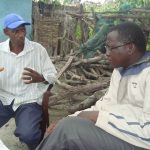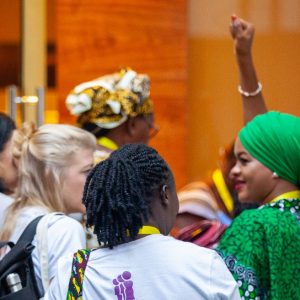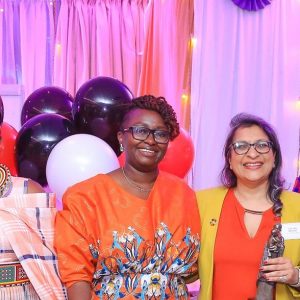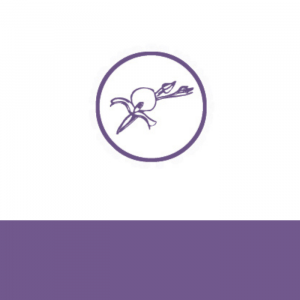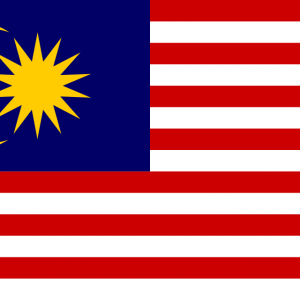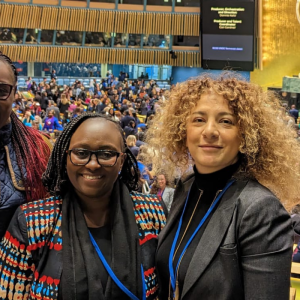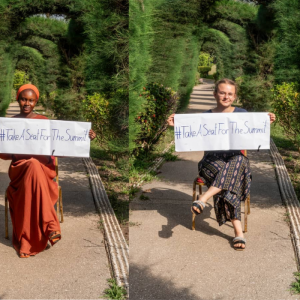It has been 11 months since the start of the Orchid Project’s partnership with Tostan social mobilization (SM) teams in Senegal which helps to raise awareness of the female genital cutting (FGC) abandonment in the four regions of the country where the rates are the highest.
One of those regions is Sédhiou, where the volunteers that make up the social mobilization team have already visited 54 villages. They have held meetings in each of these villages, inviting the entire community to discuss the consequences of FGC as well as child/forced marriage and other topics such as the importance of education for girls and pre/postnatal consultations. The participation that they have seen at these meetings has been significant, with a total of 2,648 women and 978 men having attended so far.
Recently, Tostan’s monitoring, evaluation research and learning (MERL) department conducted a mission to assess the work being done by the team in the Sédhiou region. One of the questions that the evaluators were hoping to answer was whether the information that the teams were sharing in the villages was reaching additional people – do those who participate in the village meeting share their new knowledge with other community members and neighboring villages?
In an effort to answer this question and others, the evaluators randomly selected three villages that the team had visited at some point since the project began in December 2012. They braved the long, bumpy roads (and the sometimes painfully long wait at the ferry crossing in The Gambia) to travel from Thiès, Senegal, down to Sédhiou. Once there, they visited each of these three villages and invited the community members to share with them their experience of the social mobilization team’s visit to their community.
In the village of Bougnadou Manjack, the evaluators asked those who were gathered to share with them what they had retained from the visit of the social mobilization team to their community eight months earlier. Community members responded with facts about the harmful effects of FGC as well as the consequences of child/forced marriage, the importance of keeping girls in school and the types of violence committed against women.
For their next question, the researchers asked if the community had taken any action after the social mobilization team left so that people who could not be present at the meeting would still receive the information. One of the community members, Pamply Yinjhou, said yes, the community of Bougnadou Manjack had indeed made sure that the information was spread: he himself had not been present at the meeting facilitated by the social mobilization team in January but he had learned everything that they had talked about when the community held their own meeting later that week. Pamply shared that what struck him the most from what he learned was the kinds of complications that can arise during childbirth if a woman has been cut. His ability to discuss consequences of FGC showed that the information shared by the team during their visits was not limited to those who heard it firsthand.
Other communities had used similar methods to communicate the information learned to new recipients. When the MERL team visited the village of Katabina, Tida Gassama told them that they too had organized a village-wide meeting after the SM team’s visit. In Sitaba, Bakar Dramé – the representative of the village chief – explained that their community has established three groups charged with disseminating information by going door-to-door and by organizing meetings.
The evaluators were encouraged to hear that community members were taking action to ensure the diffusion of information to their fellow residents and stressed that even more people could be receiving the information if these communities shared it with their neighboring communities. The M&E team suggested that Bougnadou Manjack, Katabina and Sitaba expand their dedicated awareness-raising efforts to people outside of their own community. For their future missions, the Sédhiou social mobilization team will specifically encourage this process of sharing information through wider social networks.
Story by Allyson Fritz, Tostan.
This blog is part of a series on the Social Mobilisation project that Orchid Project funds in support of Tostan’s long term Community Empowerment Programme. Social Mobilisation is focused on ensuring the acceleration of abandonment of FGC in Senegal. Teams of volunteers who have already abandoned FGC, called social mobilisation agents, visit and create dialogue with inter-connected communities on human rights and the negative consequences of FGC. Their work aims to spread the message of abandonment and encourage others to join them.
Social mobilisation agents are individual members of the community who have been inspired by their understanding that FGC is a harmful practices, and are eager to share their own experiences with others. Often, they are religious, traditional or community leaders who are widely respected and well-connected, active, influential participants.
You can find out more about Social Mobilisation by clicking here. If you would like to support this work, please click here


